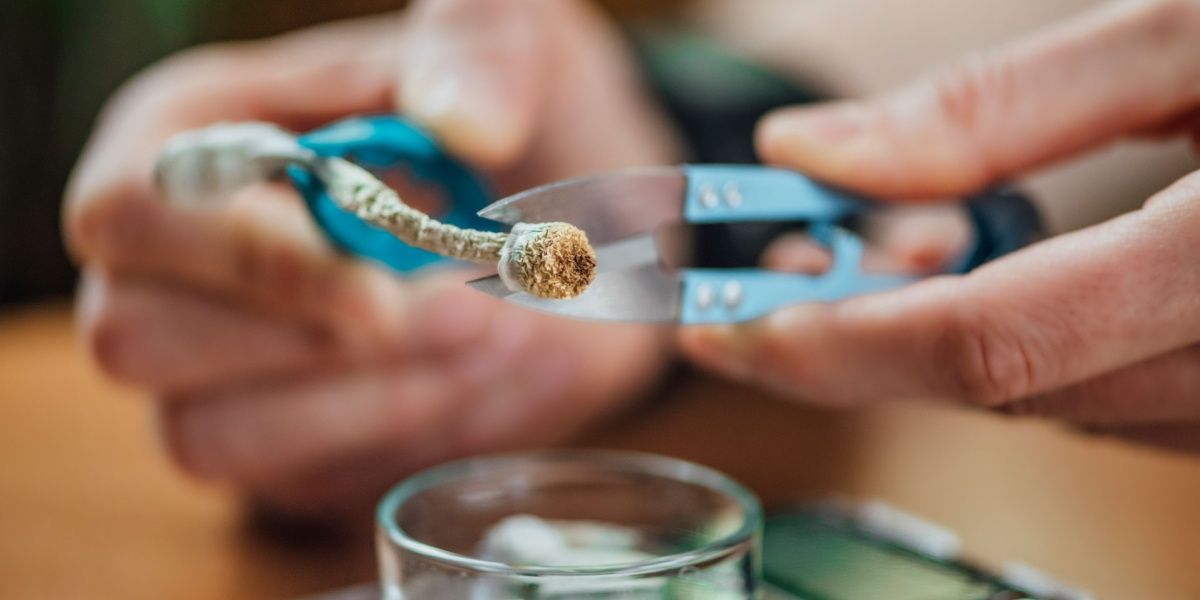Microdosing THC (tetrahydrocannabinol) is gaining attention in both wellness and recreational circles. This practice involves using very small doses of THC, too small to produce strong, noticeable psychoactive effects, but may still influence mood, cognition, or physiological processes in subtle ways.
THC is the psychoactive compound found in cannabis, and traditionally, larger doses of THC are used for medicinal or recreational purposes. However, microdosing is a more controlled, nuanced experience. But what are the actual benefits and risks? Let’s take a closer look.
- Small doses of THC (1-5 mg) may provide therapeutic effects such as reduced anxiety, pain relief, improved sleep, and enhanced focus without strong psychoactive effects.
- The ideal microdose varies based on factors like body weight, metabolism, and prior cannabis use. People are advised to start with 1 mg and gradually adjust to find the most effective dose while minimizing unwanted effects.
- Despite potential benefits, THC microdosing lacks standardized medical guidance, and product inconsistencies make precise dosing difficult. Some individuals, such as those with a history of substance use disorders, should avoid it.
.jpg?v=1741692490)
Growing interest in THC microdosing
Microdosing THC refers to taking a small, sub-perceptual amount of THC. Typically, this means consuming 1-5 milligrams (mg) of THC, far less than what is usually found in a standard cannabis product, which can range from 10 to 20 mg of THC. [1][2]
Microdoses of THC are administered through:
- Tinctures: placing drops under the tongue, allowing for faster absorption than edibles but slower onset of action than inhalation
- Edibles: these take longer to take effect due to digestion but produce longer-lasting effects.
- Vaporizing: quick onset of action and allows for easier dose control compared to smoking.
THC affects the endocannabinoid system (ECS), which regulates a range of physiological processes, including, but not limited to, mood, pain sensation, appetite, and cognition. The compound binds to cannabinoid receptors, primarily CB1 receptors in the brain. This bond causes neurotransmitter release and modulates neuronal activity. Microdosing THC results in mild cannabinoid receptor activation, producing subtle effects on mood, focus, and pain relief without the pronounced psychoactive impact of recreational THC use. [3]
Why do people microdose THC?
People microdose THC for several reasons:
- To relieve anxiety and stress[4]
- For chronic pain management [5]
- For enhanced focus and creativity
- To help with better sleep [6][7]
Microdosing THC is predominantly a self-directed practice rather than something a doctor would guide you through. Therefore, a standardized experience or therapeutic outcome doesn’t exist, and individual experiences can vary significantly. In addition to this, some people may experience a placebo effect, as users' expectations and psychological factors may influence the subtlety of the effects.
How much is a microdose of THC?
A microdose of THC ranges between 1 to 5 mg—the most effective dose depending on individual tolerance and desired effects. The goal of microdosing is to experience the therapeutic benefits of THC while avoiding significant psychoactive effects. [2]
Standard measurements and estimates
- 1 mg THC – Considered a very low dose. It is often used by beginners or those highly sensitive to cannabis.
- 2.5 mg THC – This is a standard starting dose known for producing mild relaxation and subtle other effects.
- 5 mg THC – This is considered the upper range of microdosing. It causes mild euphoria but should not impair daily activities and responsibilities. [8]
The ideal microdose varies for each person, where factors such as body weight, metabolism, prior cannabis use, and individual sensitivity to THC play a role. People new to microdosing are customarily advised to start with 1 mg and gradually increase as needed. [8]
People seeking symptom relief while maintaining productivity and mental clarity may find that 2.5 mg or lower provides the most balanced effects.
Evidence for the benefits of THC microdosing
Research on THC microdosing is still emerging, but preliminary studies suggest potential benefits for mental health, pain management, cognitive function, and sleep quality. Below are key areas where microdosing THC has shown promise.
Anxiety and stress reduction
Low doses of THC have been found to reduce anxiety by modulating the release of serotonin and dopamine, neurotransmitters linked to mood regulation. Studies suggest that microdosing can promote relaxation without the paranoia or heightened anxiety sometimes associated with higher doses. [4]
Pain management
THC interacts with CB1 and CB2 receptors in the nervous system, helping to modulate pain perception. Microdosing has been particularly noted for its role in managing neuropathic pain and inflammation without the tolerance buildup seen with higher THC doses. [5]
Cognitive function and focus
While high doses of THC may impair memory and cognitive function, low doses appear to enhance focus, creativity, and problem-solving skills in some individuals. Microdosing is thought to support dopaminergic activity, which plays a role in attention and executive function. [9]
Sleep quality improvement
THC has been linked to improved sleep onset and duration, and microdosing may help users fall asleep more easily without the grogginess associated with higher doses or traditional sleep aids. Small amounts of THC can modulate the sleep-wake cycle by interacting with CB1 receptors in the brain. [6][7]
Neuroprotection and brain health
Preliminary research indicates that THC, at very low doses, may have neuroprotective properties, potentially helping with age-related cognitive decline and neurodegenerative diseases like Alzheimer’s and Parkinson’s. Microdosing may support neuroplasticity—the brain’s ability to form new neural connections. [9][10]
Creativity and social engagement
Many users report that microdosing enhances creative thinking, problem-solving, and social interactions without the mental fog or impairment associated with higher THC doses. Some artists, writers, and professionals use THC microdosing to boost divergent thinking, which is linked to creative problem-solving. [11][12]
Risks and drawbacks
Even though research on THC microdosing is limited, and its risks are not yet described, some drawbacks exist: [13]
Finding the right dose
People usually experiment with dosage and frequency when starting THC microdosing to find the effect they’re looking for. There is the risk of increasing the dose too high, where it might have unintended side effects. Dosages of THC higher than 5mg can result in paranoia, dry mouth, dizziness, or mild cognitive impairment.
Lack of regulation
THC product labeling is inconsistent in many regions, and without standardized dosing, it is difficult to know the exact amount of THC in a product. This is a problem for people who require precise dosing to avoid unpredictable experiences.
Potential for overuse and tolerance
Although microdosing involves small doses, some users may gradually increase their intake over time. Repeated exposure to THC, even at low doses, can lead to tolerance, requiring higher amounts to achieve the same effects.
Who should avoid THC microdosing
Certain people should exercise caution or avoid microdosing altogether due to potential health risks, legal concerns, or adverse effects:
- People who are prone to severe anxiety or psychosis
- People with a history of substance use disorder
- Pregnant or breastfeeding women
- People with heart conditions
- Individuals subject to workplace or legal drug testing
- People taking certain medications
How can you safely microdose with THC?
To safely microdose THC, it’s best to follow a structured approach.
Start with a minimal dose
The key to safe microdosing is starting low and increasing gradually. A common approach is to begin with 2 mg of THC per day and increase by 1 mg daily until the desired effects are achieved.
Many people find it helpful to divide the daily dose into two—one in the morning and one in the evening—to maintain consistency and avoid unwanted side effects.
Track your responses
Consider keeping a journal to track:
- Changes in anxiety levels
- Reduction of pain and discomfort
- Cognition and mental clarity
Recording the specific dosage that provides relief will help refine your approach and prevent overuse or tolerance buildup.


-guide-detail.jpg?v=1756808755)
-guide-detail.jpg?v=1722501675)
